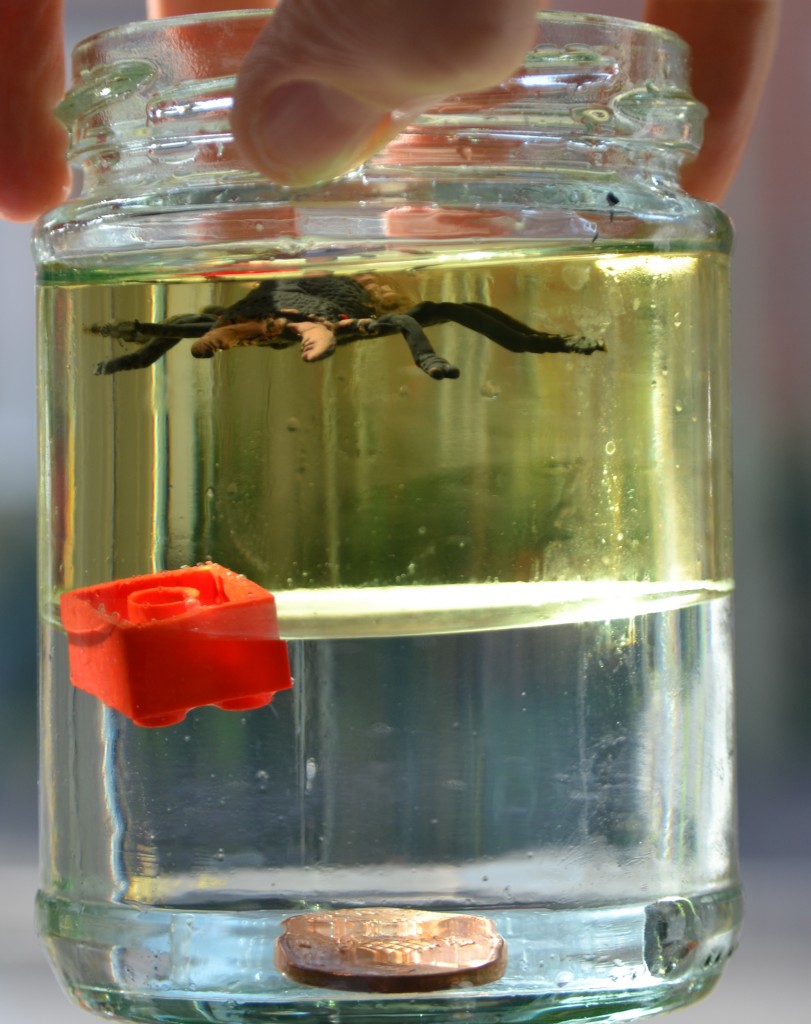
What is Density? Easy Density Experiments and Tricks for Kids
Density Experiments - The Density of Different Liquids Not only is it fun to experiment with the density of various objects, but it's also pretty amazing to experiment with the density of different liquids. Rainbow in a Jar - This is one of our all time favorite density experiments.

Density Column
EXPERIMENT STEPS. Have an adult help with this experiment since hot water will need to be handled. Step 1. Place a full cup of water in the freezer or refrigerator and allow it to cool for 15 minutes. Step 2. Remove the water from the freezer and mix with a few drops of blue food coloring. Step 3. Heat up a full cup of water.
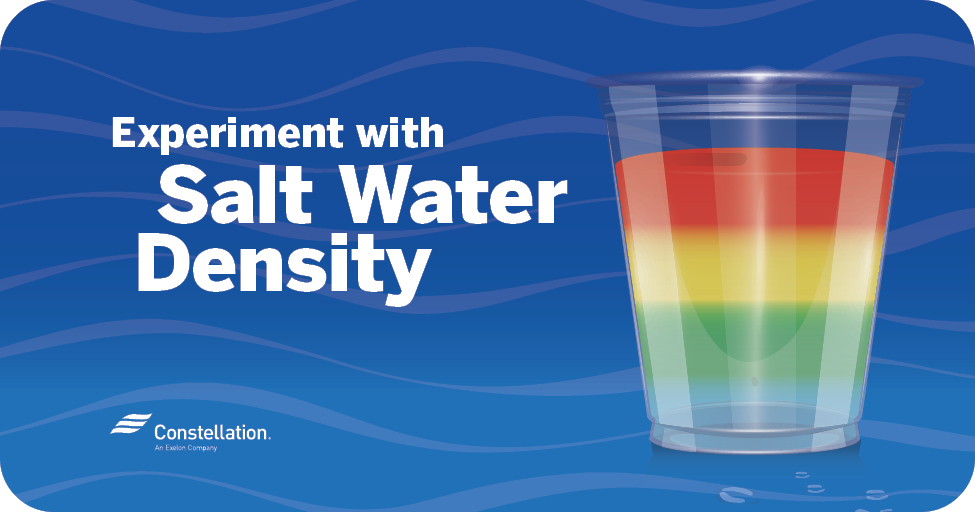
Experiment for Kids Salt Water Density Constellation Residential and Small Business Blog
This is because corn syrup has the highest density of all the liquids, about 1.4 grams per cubic centimeter (g/cm³), whereas the density of water is about 1 g/cm³ at room temperature. Vegetable oil is lighter than water with a density of about 0.9 g/cm³ and thus floats on top of the water.
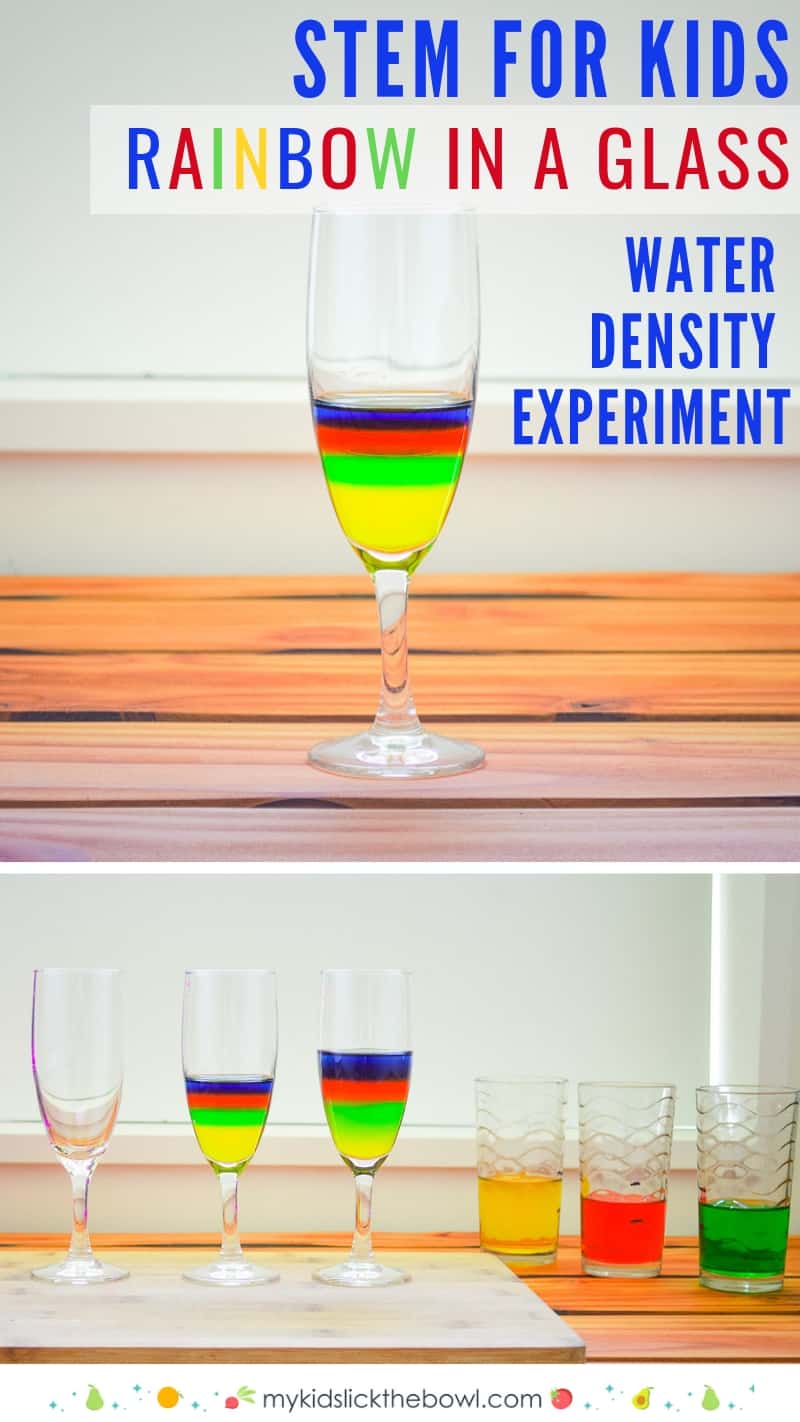
Rainbow Water Challenge Sugar Water Density Experiment STEM FOR KIDS
By Amy Cowen on February 17, 2022 4:00 PM Use these free science lessons, experiments, and activities to teach K-12 students about density. Sometimes students wrongly think that an object's density is the same as its weight or its mass. Instead, density refers to an object's mass in a given volume.
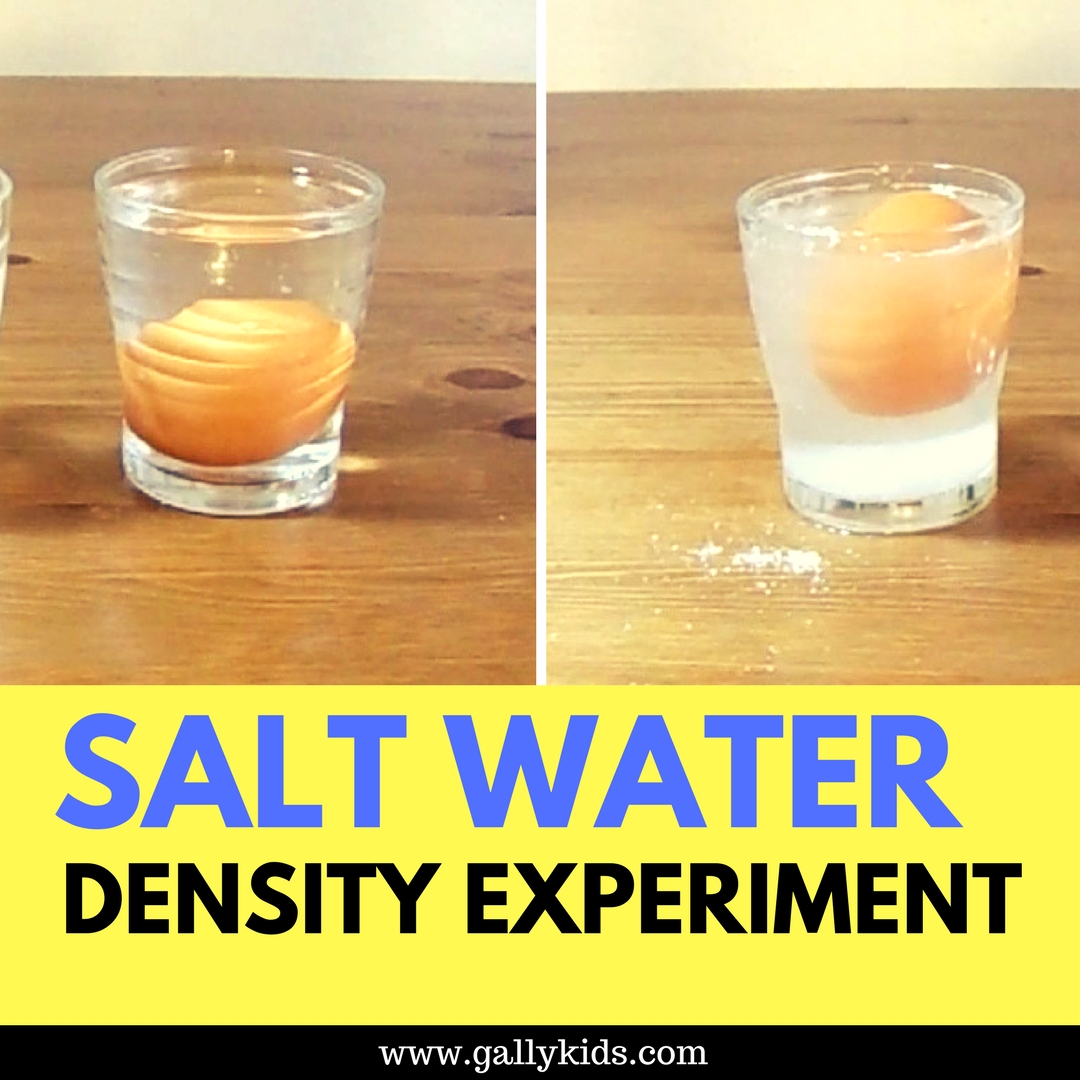
Density Experiment With Water Watch The Floating Egg!
How To Make A Liquid Density Tower. STEP 1. Add your ingredients from heaviest to lightest. Here we have the heaviest being corn syrup, then dish soap, then water (color the water if desired), then oil, and lastly alcohol. STEP 2. Add the layers one at a time, and add a drop of food coloring to the alcohol layer.
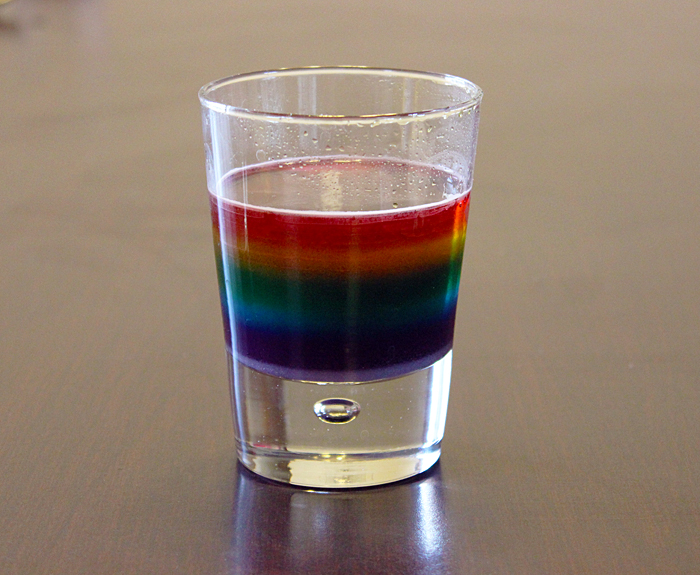
Water Density Experiment Fun Family Crafts
In this fun and easy density science experiment for kids, we're going to see if water floats. Materials: Water Measuring cups Narrow glass or vase Corn syrup Bleach (handle cautiously and only with adult supervision) Vegetable oil Red food coloring Blue food coloring Instructions: Mix a couple drops of red food coloring with 1 cup of corn syrup. Pour into the glass. Now add 1 cup of vegetable.

Density Science Experiment Pour Water, Oil, Syrup Into A Glass And See What Happens ScienceSwitch
Carefully pour the next liquid you are using down the side of the container. Another way to add the liquid is to pour it over the back of a spoon. Continue adding liquids until you have completed your density column. At this point, you can use the column as a decoration. Try to avoid bumping the container or mixing its contents.

Question Video Identifying the Relative Density of a Solid and Two Different Liquids in an
Density is all about the compactness of stuff in space. For this experiment, the more sugar in each glass of water, the greater the density of the water. Same space, more stuff in it! The denser the substance, the more likely it will sink. This is how our rainbow sugar water density tower works! Learn more about density!
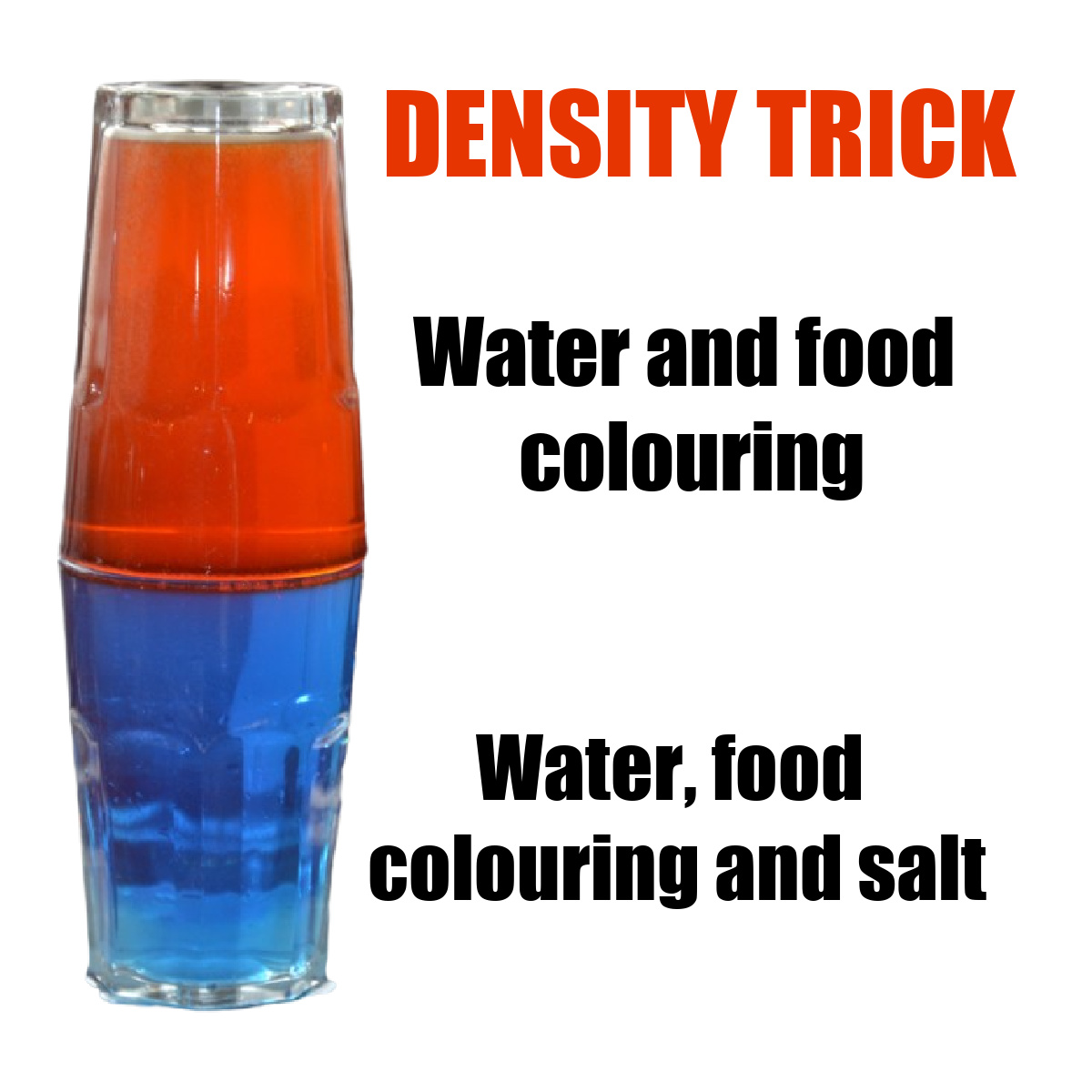
Science Trick Coloured Water Density Trick Science Sparks
Experiment Instructions: Step 1: Place one tablespoon of salt in one of the empty cups. Step 2: Fill one cup between 1/2 to 2/3rds full with water. Step 3: Place several drops of red food color into the same cup and stir well. Step 4: Fill the second plastic cup about half full with water and add a few drops of blue food color, then stir.
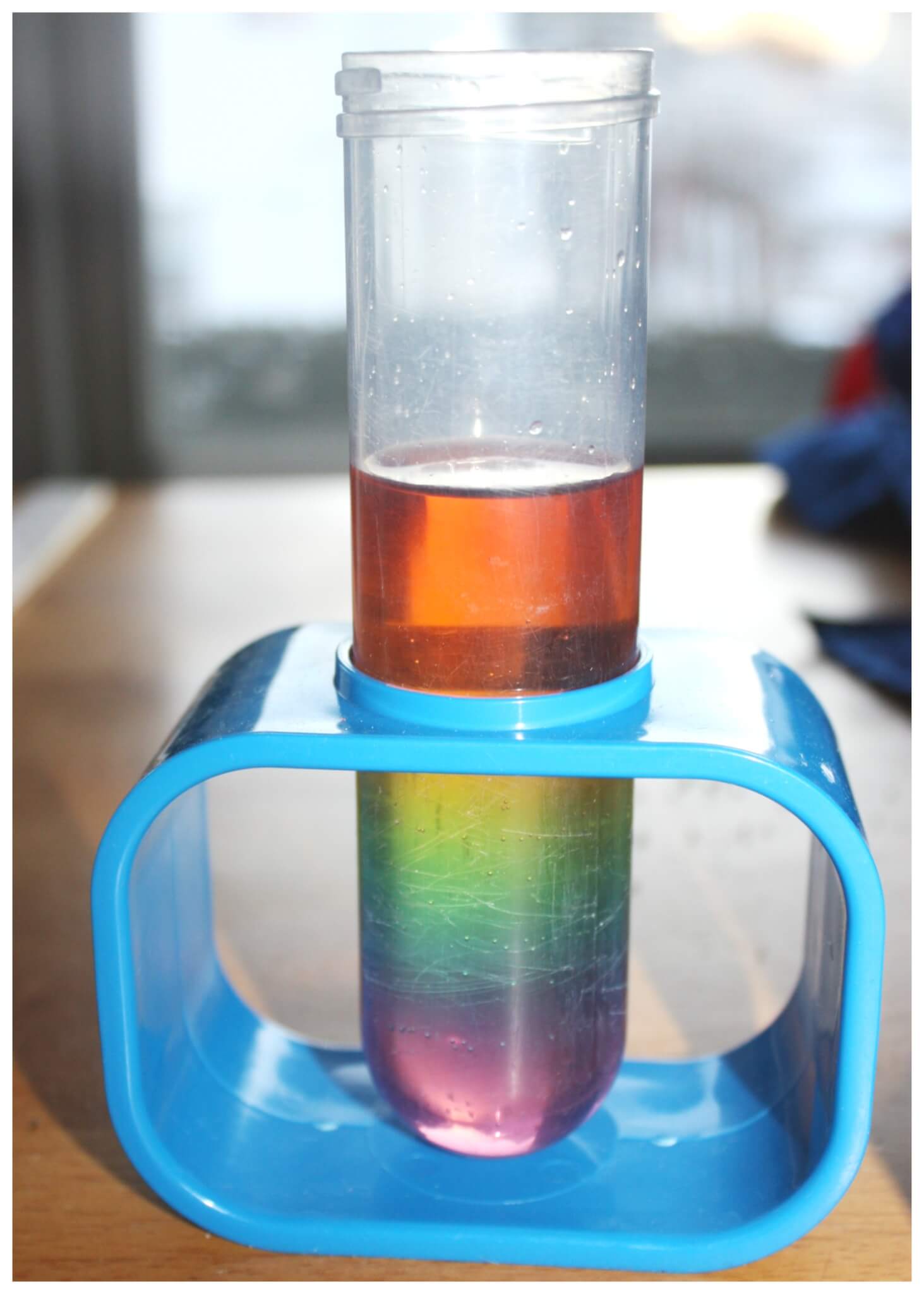
Sugar Water Density Rainbow Science Experiment
Experiment Videos Seven Layer Density - Cool Science Experiment Watch on Here's What You'll Need Light corn syrup Water Vegetable oil Dawn dish soap (blue) Rubbing alcohol Lamp oil (select a cool color like red, available at a department store) Honey Glass cylinder Food coloring Food baster Seven plastic cups Scale (optional) Let's Try It
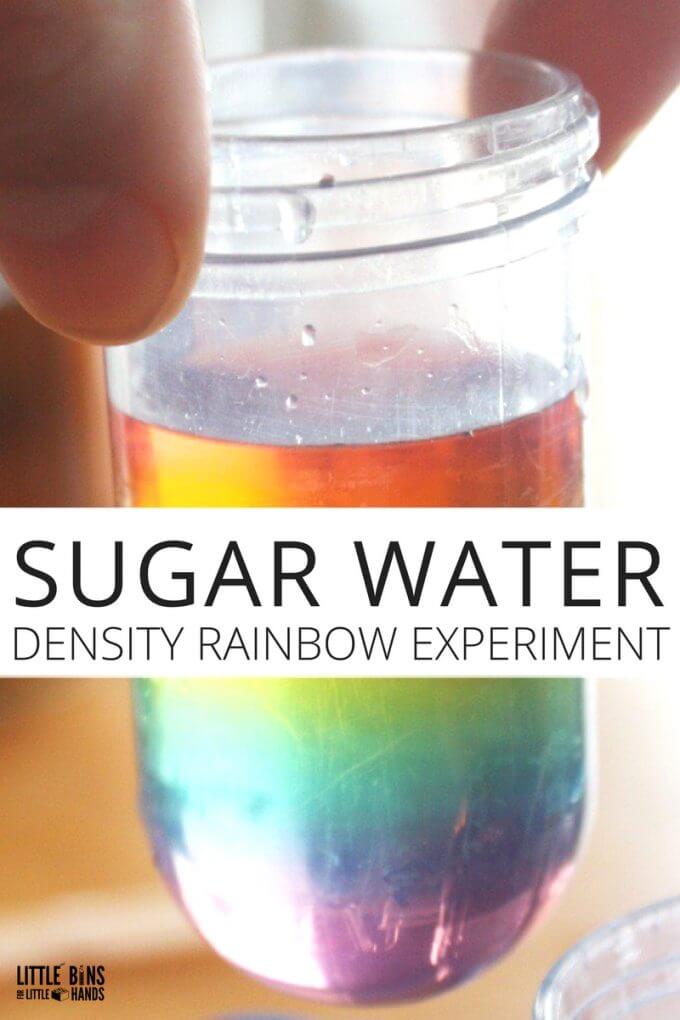
Rainbow In A Jar Density Experiment Little Bins for Little Hands
Experiment #1: Sink or Swim WHAT YOU NEED 3, 150 ml beakers (or use glass jars or clear plastic cups) water corn syrup vegetable oil (you can also experiment with various types of oil, i.e. olive oil, lamp oil, baby oil) several small objects - raisins, paperclips, pennies, small corks, etc. INSTRUCTIONS Question & Hypothesis
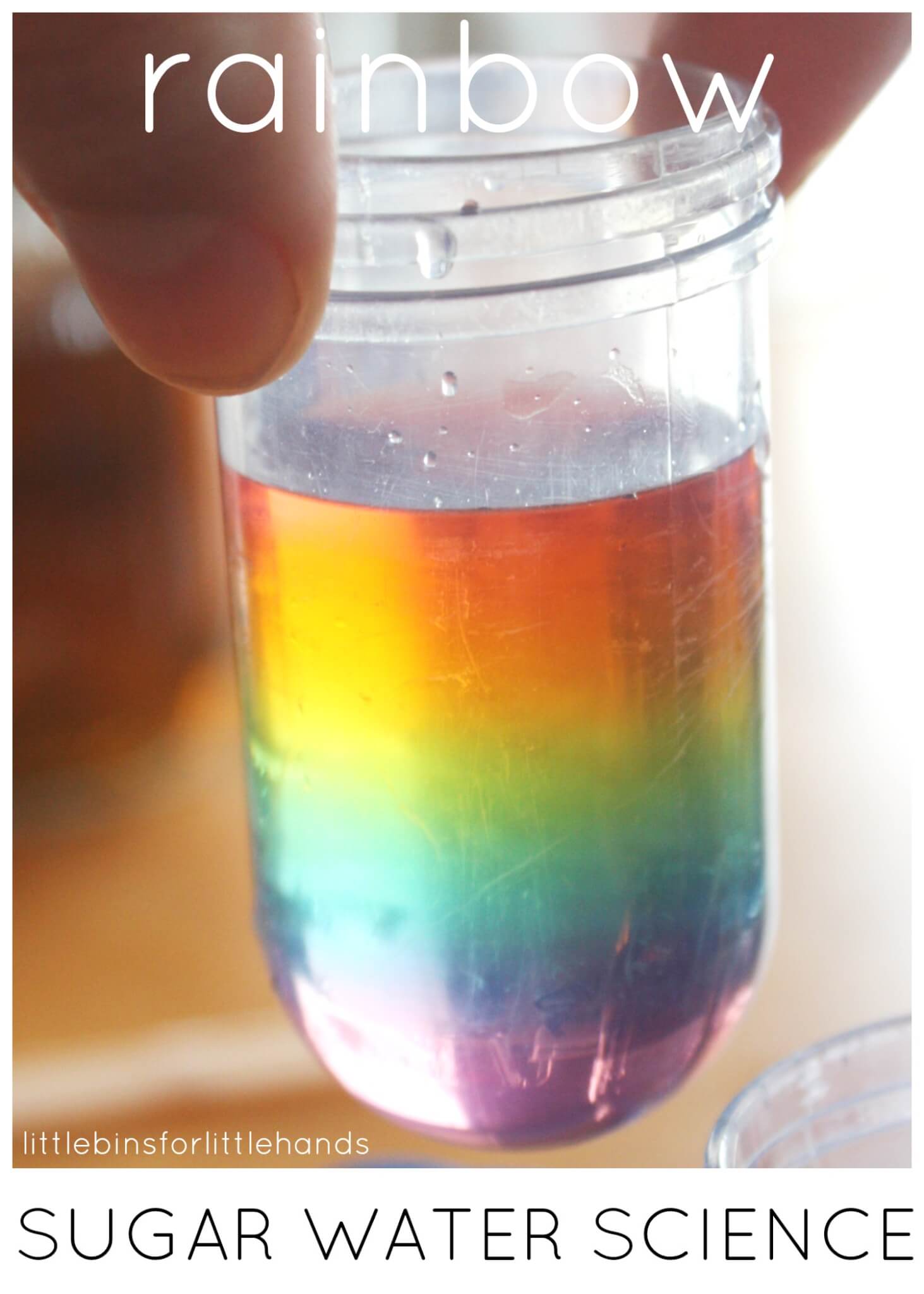
Sugar Water Density Rainbow Science Experiment
By Rochelle Leggett Density is measured as the ratio of a material's mass in comparison to its volume, and is an important property of materials. All materials have their own specific density, which can sometimes be used to identify the material and predict its properties.

Image result for 4 Layer Density Column Science experiments, Science experiments kids, Science
Simple density science experiment that you can try at home to see how liquids and objects with different densities behave. Using three fluids (syrup, water and oil) we can see they clearly.

Make a Colorful Liquid Layers Density Column Density column, Density bottle, Science projects
1. Explain density using examples. 2. Identify and use laboratory equipment. Other potential objectives: 1. Measure mass. 2. Define mass. 3. Measure volume. 4. Define volume. 5. Calculate density. 6. Explain density conceptually. 7. Compare the densities of different materials. 8. Design an experiment to test a hypothesis. Step 1: Materials

water Density Experiments with lemon/Science school project for exhibition/kansal Creation YouTube
Density of water Warm water is less dense than cold water so the red warm water sits on top of the cold water when the card is removed from between the jars. If you put the hot water on the bottom the colours mix as the denser cold water drops down into the less dense hot water.
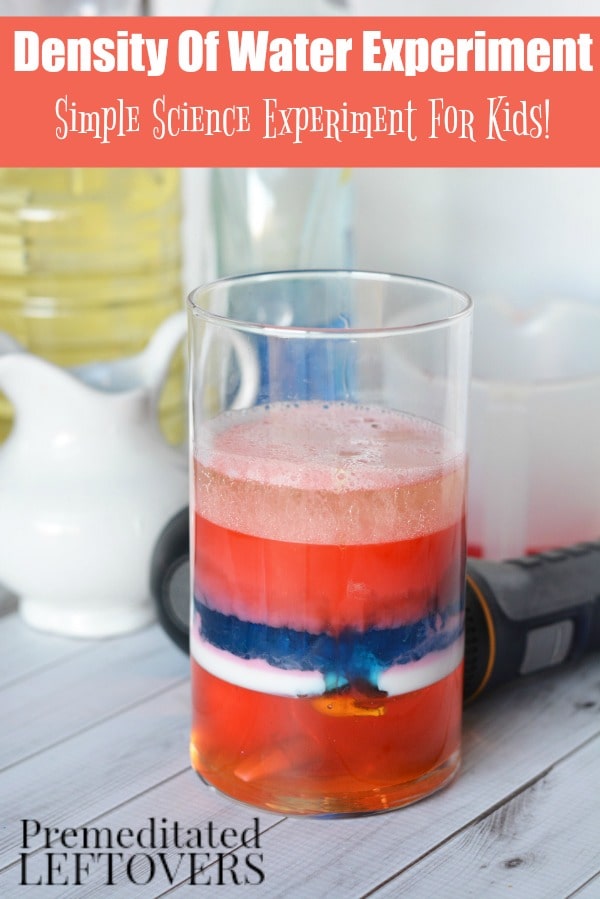
Density of Water Experiment for Kids
Density of Water Experiment FAQs Some properties of water are given in the table below: Watch the video and learn about the properties of water 76,982 What Is the Density of Water? The density of a material is defined as its mass per unit volume. It's a measurement of how tightly matter is packed together.